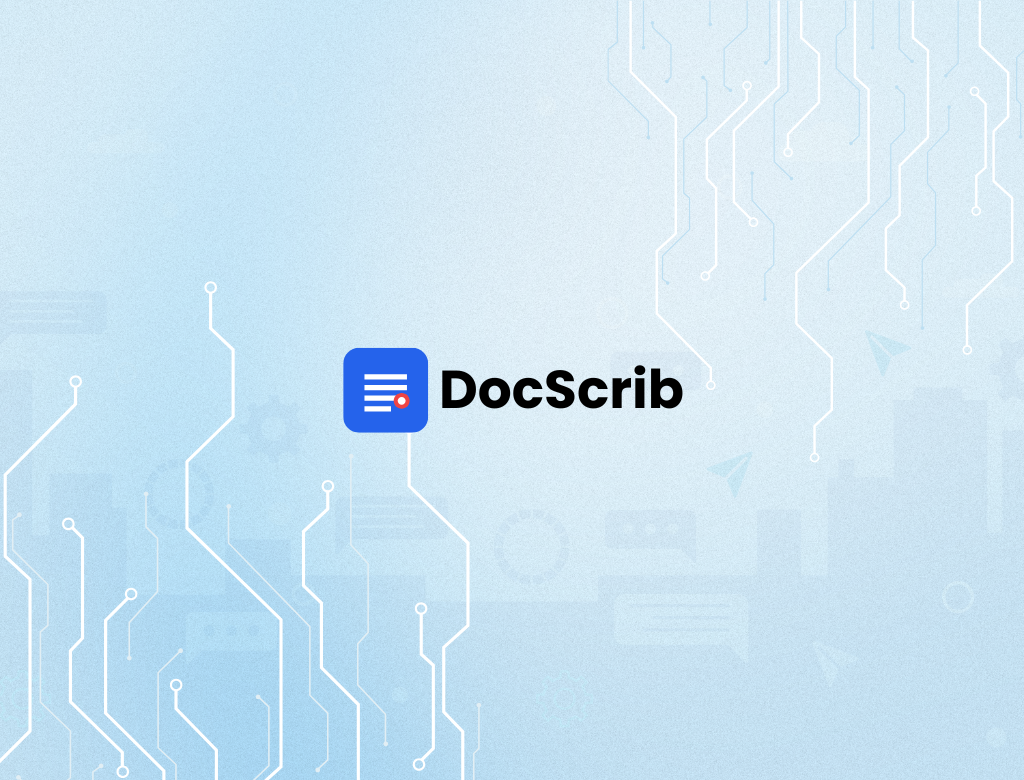By Team DocScrib | June 2025
In 2025, almost every clinician interacts daily with a digital health record. Yet, the terms “EHR” and “EMR” are still used interchangeably—often inaccurately. But the difference between the two is more than just semantics. It reflects how care is delivered, shared, and improved over time.
📘 EHR vs. EMR: A Quick Definition
| Term | Stands For | Core Function | Who Uses It |
|---|---|---|---|
| EMR | Electronic Medical Record | Digital version of a paper chart for a single practice | Mostly used within one clinic or office |
| EHR | Electronic Health Record | Comprehensive, interoperable record that travels across systems | Used by multiple providers, hospitals, labs, specialists, etc. |
In short:
-
EMRs are digital charts for your clinic.
-
EHRs are sharable, longitudinal records across all of a patient’s care.
💡 Real-World Example
Let’s say a patient visits her primary care doctor, who uses an EMR. That EMR captures vitals, labs, diagnoses, and prescriptions—but it stays within that office.
Now the same patient gets referred to a cardiologist and later needs an ER visit. An EHR allows all providers involved to access, update, and share her health information—ensuring continuity of care.
Why the Distinction Matters
1. Care Coordination
EHRs break down silos between departments and specialties. This improves patient safety, reduces duplication, and ensures informed clinical decisions.
2. Patient Portability
EHRs allow patients to carry their health history with them—empowering them to switch providers or get second opinions without starting from scratch.
3. Data-Driven Care
EHRs are built for analytics. They can track population health trends, flag risky prescribing patterns, and support value-based care.
EHR Usage Trends in 2025
As AI tools like DocScrib evolve, the EHR itself is also changing. Here are some key trends:
1. Ambient AI Integration
More hospitals are integrating AI scribes directly into their EHR. Platforms like DocScrib auto-generate SOAP notes, lab summaries, and encounter histories—directly into the patient’s chart.
“The note writes itself. I just review and sign.”
— Dr. Julia Moore, Hospitalist, San Francisco
2. Mobile-First Access
EHR platforms are optimizing for mobile and tablet use, helping clinicians document and review on the go.
3. Interoperability Mandates
Thanks to regulations like the 21st Century Cures Act, vendors are required to make health records more shareable across systems.
4. Modular Ecosystems
EHRs are opening up APIs for niche tools—like AI scribes, billing assistants, or chronic disease dashboards—to plug in without disrupting workflows.
Where DocScrib Fits In
DocScrib isn’t an EHR—it’s a layer that makes using one easier. It captures clinical conversations and turns them into EHR-ready notes. Whether you’re on Epic, Athena, Cerner, or a local EMR, DocScrib fits into the process without demanding a full platform switch.
Final Word
In 2025, the debate isn’t EHR vs. EMR—it’s whether your tools are working together.
Because ultimately, the goal isn’t just digitizing records. It’s making sure every patient gets safer, smarter care—wherever they are.
🚀 Want to make your EHR experience less painful?
Try DocScrib and see how AI-driven documentation fits right into your system. Visit docscrib.com to request a trial.
